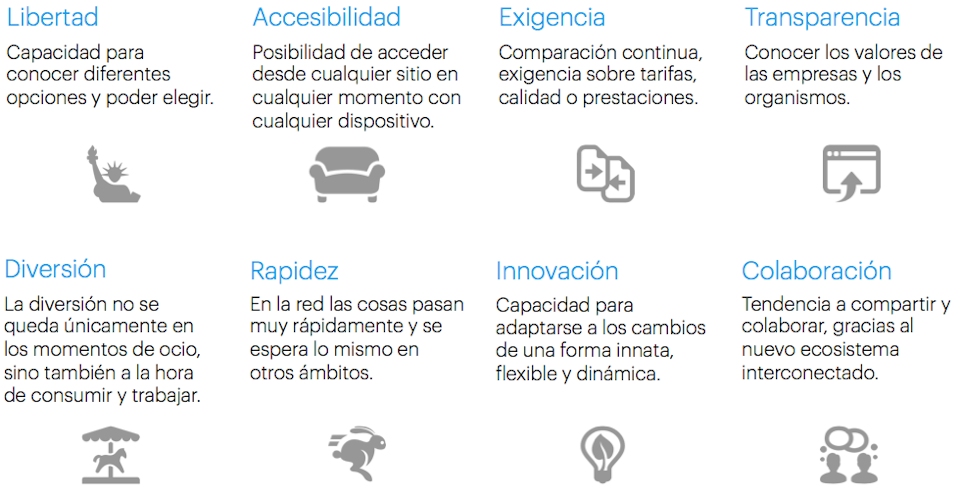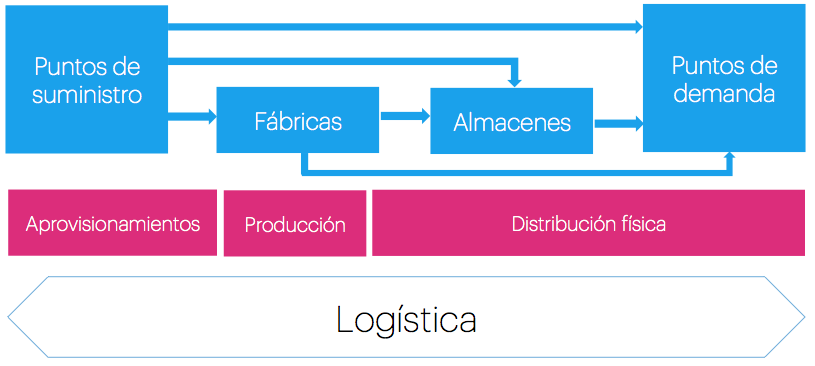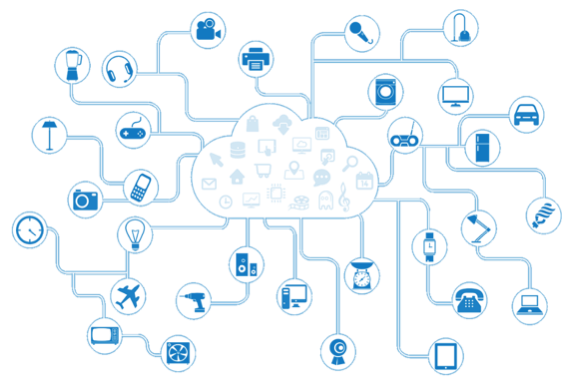Article
Digitalization challenges in the logistics industry

The digital age has a major impact on the logistics industry in terms of customer experience, the digitalization of transactions, and technology
According to the Council of Supply Chain Management Professionals (CSCMP), logistics can be defined as the process of efficiently planning, executing, and monitoring the flow of raw materials, work-in-progress inventory, finished products, services, and related information, from the point of origin to the point of consumption (including external and internal movements, as well as incoming and outgoing movements) with the aim of fulfilling the customer’s needs.
Traditional logistics efforts no longer apply in this new era. We now face new, different, and demanding customers.

1. The new digital age
The rapid evolution of new technologies and their affordable nature is driving people to adopt them on a massive level, making their lives easier. This forces entities and their ecosystems to transform in order to improve their competitive position and sometimes even to maintain it. Society has changed how knowledge is shared and how we interact with our surroundings, and this affects people and especially organizations.
Customers
Customers, also known as end consumers, have access to an increasing number of vendors, solutions, and services from which to choose, and the barriers to change are progressively smaller. Customers gain power and the competition becomes fiercer, which in turn drive creativity and innovation as differentiating aspects.
Organizations
This is making organizations become increasingly concerned. There is a sense of urgency in understanding what is happening and how to address new challenges that arise, and technology plays a key role in this.
The new digital age is defined by the new user profile that incorporates digital capabilities. As a result, organizations must understand the characteristics of new customers:

The characteristics of the new users within the new digital age are causing organizations to be immersed in a digital transformation process that adapts businesses to new social, business, and technological realities shaped by the connected life of the digital age. People have already adopted the digital culture and they expect to interact with their surroundings using the new digital tools and solutions that enable immediacy, ubiquity, and self-service. Aspects such as customer mobilization gain importance in terms of marketing as well as use. For the first time ever, people are a step ahead of organizations in the use of new technologies.
Some organizations have already started to adapt. This transformation is focused on the pillars of customer relationships and operations, although it affects all areas. As a result, the digital transformation is a defensive action and it also creates opportunities for new business concepts, revenue generation, and improved efficiency. Companies that successfully carry out the transformation process will have a competitive advantage in the market.
2. Current status of the logistics industry in terms of digitalization
In this day and age, logistics is slowly gaining the importance it deserves. This is primarily due to the rise in e-commerce, which according to the latest report published by the CNMC (Comisión Nacional de los Mercados y la Competencia, or the National Markets & Competition Commission), has experienced a year-on-year growth rate of 25%.

In light of the transaction volume and the increasingly demanding consumers, logistics providers have had to become more flexible, fast, and reliable, as well as to create new and innovative delivery solutions that allow them to address current customer expectations:
_ Reliable delivery times
_ Long hours of operation
_ Quality deliveries
_ Real-time tracking
_ Flexible and personalized services
_ Fast returns processing
To address these requirements, investments in R&D&i and quality levels in terms of distribution have become key success factors for logistics providers (especially applied to e-commerce). As a result, the transformation being carried out by logistics service providers is primarily based on ICT aspects. One example is the electronic integration of portals with logistics providers, picking tasks for improved efficiency, and of course, reverse logistics so returns can become an opportunity instead of a cost.
3. Main challenges
The challenges can be divided into four major categories:

The customer experience concept requires companies to transform internally in order to develop a digital culture that allows them to undertake changes with the speed required by the market
3.1 Customer experience (CEx)
It is becoming increasingly important to improve customer satisfaction, which involves faster deliveries that are able to reach anywhere. This requires changes aimed at fostering collaborations between carriers specialized in certain types of operations or customers. The analysis of big data is playing a huge role. Logistics providers have enormous amounts of data related to customer habits and preferences, among other aspects, and this can help them anticipate by creating new business models that adapt to these needs for optimal operating efficiency.

There are two types of solutions:
_ B2B (Business to Business): These use Internet technologies to optimize operational relationships between companies. Supply chain solutions, solutions aimed at improving customer service (CRM), hosting third-party applications (APS), and market places are the main service groups that provide B2B.
_ B2C (Business to Consumer): These use e-commerce technologies to optimize operational relationships between companies and end consumers.
The challenges addressed to date in this field include:
Package tracking
Ability to know the status of your order at any time.
Exact delivery date
Ability to know the exact delivery date of your package.
Self-shipping
Processing/requesting the shipment without relying on company staff.
3.2 Operations
Digital companies require an open organizational culture and they are involved in the leadership style, processes, operations, organization, motivations, and employee engagement in order to face the challenges of digitalization.

The transformation begins from within. The new customer experience concept and the corresponding business models require companies to evolve internally in order to develop a digital culture, processes, and operations that are more agile, along with networked efforts and partnerships, that allow them to undertake changes with the speed required by the market. The determined commitment of senior management is needed to transform a corporate culture.
Employee motivation is directly related to a company’s competitiveness. The three work aspects that develop intrinsic motivation are:
_ Defining a vision
_ Personal development
_ Increased self-management
On the other hand, the digital culture of an organization must include the following values:
Openness and transparency
The availability of information is “democratic”. Everyone has access to the source code (in other words, the information that is needed to make decisions). Trust is created because there are no hidden agendas or data that leads to mistrust.
Collaboration and co-creation
Digital tools make it possible to optimize collaborations. They are personal productivity tools. The need for special profiles requires a greater degree of collaboration between multidisciplinary teams.
Community
Collective intelligence is built as a community by having everyone share what they know or understand. Experiences, discoveries, documents, and perspectives are shared. The most important aspect is to share.
Reciprocity and meritocracy
Bloggers taught newspapers how to link sources. In digital environments, those involved cite, appreciate, and acknowledge each other. Structures are based on merit as opposed to power, influence, or years of experience.
Automation of processes/operations
Automation of warehouse management, shipping, and distribution, waste recycling and environmental protection, and administrative support.
Digitalization of document management
Sharing information in a more agile manner, digitizing internal and customer documentation with the subsequent office space savings, automatic document archiving, automating processes and forms.
Security
Technological security is implemented with the priority of protecting and safeguarding information in document format, and it is primarily aimed at ensuring the confidentiality, integrity, and availability of information.
3.3 Technology
A number of potential benefits have been identified in the use of new information and communication technologies in the shipping and logistics industry that can:
_ Facilitate additional elements for carriers and loaders when selecting the most suitable service. Along these lines, online platforms provide more information about existing services in all shipping modes and give users access to real-time information about the delivery of goods.
_ Optimize the management of shipping processes by having real-time information about delays, incidents, etc. This information makes it possible to react and arrange a route change or switch to another shipping method, etc.
_ Reduce administrative costs by incorporating electronic documents.
The main uses of new technologies in logistics are:
Document scanning
Applications for every type of digitalization device used: central scanner, web, network scanners, and mobile devices.
Digital signature
Solutions for written signatures on electronic documents for pick-ups, with specific applications for every format. Includes the detection of biometric signature data and legal guarantees.
Bar code
Used for stock and inventory management, tracking products in the platform, automating order preparation, tracking batches, monitoring shipments, and tracking packages.
Electronic chips
Thanks to electronic labels, products can be tracked throughout their production and distribution cycle.
Radio frequency
Particularly interesting for stockage and distribution operations because it provides greater flexibility.
Cell phone
There are logistics applications to track and trace as well as to manage warehouses, itineraries, and fleets.
GPS
Allows implementing fleet management systems in order to locate and track vehicles, schedule itineraries, plan routes, etc., all in real time.
RFID
Allows capturing data and monitoring movements without human intervention, and then sharing that information within the company or with third parties. This includes goods identification at the origin, location changes, supply chain visibility, management of returned goods, etc.
The logistics industry must explore the possibilities made available by the Internet of Things because it could benefit from many potential opportunities
However, without a doubt, the main challenge and opportunity for the logistics industry regarding technology will result from the expansion and consolidation of the Internet of Things (IoT), which refers to the digital interconnection of everyday objects through the Internet.

The IoT is not a technology in itself, but rather it defines a new framework in which people, businesses, and organizations interact with their surroundings. Therefore, the IoT is powered by some of the aforementioned technologies, such as mobile devices, GPS systems, and RFID chips, among others. However, the IoT has its own challenges that the logistics industry must face in order to boost its operations and take advantage of the opportunities made available by the new digital age. There are two main challenges:
Warehouse management
Optimal warehouse management is a crucial aspect for the logistics industry in terms of the warehouses as well as the port and airport areas. There are a number of factors that, when managed incorrectly, can have a negative impact on shipments, resulting in lower profits and customer satisfaction. The IoT can improve warehouse management by giving a “digital voice” to physical assets. On the one hand, digitalized warehouses can share their information in the Cloud to make sure that the right product is in the right place at the right time. On the other hand, the movement of people and vehicles within a warehouse area can be optimized by reducing the number of unnecessary trips, lowering fuel consumption, and preventing congestion in certain areas at certain times. This can all be optimized with the IoT by equipping all the elements involved in the process with RFID systems so they may communicate with each other, thereby reducing the level of human interaction for more efficient and precise operations.
Fleet management
In logistics, success consists of delivering items on time and in good condition. To do so, companies must optimize delivery management, and a number of powerful route planning systems are currently available that take into consideration multiple factors, such as the distance between delivery points, vehicle capacity, load placement, customer preferences, etc. However, the IoT adds a new dimension in the sense that it is no longer a matter of simply knowing where every vehicle within the fleet is located (this is already handled by GPS systems), but rather of integrating this information in the environment and making constant decisions in real time. The information provided by other vehicles, roads, traffic lights, and buoys (in the case of maritime transport), among other aspects, should be used to adapt vehicle plans in real time and to continuously re-optimize routes.
The IoT can be used for more than just routes; fleet management covers much more. Examples include sensors integrated in the vehicles to indicate maintenance needs for specific parts, on-board safety systems that reduce the possibility of incidents caused by human error, etc. New possibilities appear on a daily basis, and the logistics industry must explore them because it could benefit from many potential opportunities.
4. Digital practices
As we have shown throughout the document, there is a link between ICT investments, organizational change, and business results. For this reason, we venture to summarize the most important points for “learning” how to best adapt to the digitalization of logistics:
_ Involvement of the human factor, because a cultural change is needed that highlights teamwork and the commitment of senior management throughout the entire logistics change involved in decentralizing operations.
_ Strategic vision of the entire logistics network in line with the strategy of the entire system, thereby improving awareness of market variations.
_ Interactions of the businesses that make up the network, with relationships based on mutual trust, confidential and long-term unions, and including all the components in decision making.
_ Establishing open and direct relationships between the network components, and integrating processes, especially planning and forecasting.
_ Focusing production at specific points that serve a large geographic market.
_ Product offering based on varied and quality items.
_ An intense use of ICT in logistics minimizes the importance of a company’s geographic location as a key factor in forming part of business networks.
_ Sharing and distributing knowledge becomes a key factor of logistics operations.
_ Reverse logistics. ICT allows major improvements in how companies manage reverse logistics. The information processes generated once a product has been consumed are increasingly precise and make it possible to manage these physical flows.
5. Conclusion
The new digital age is a reality. Our society accepts them and includes them in a growing number of aspects of our lives, including relationships between people and businesses.
For the first time in history, in light of a technological advance, people have adapted to the situation and integrated it in their daily lives before companies have been ready to operate in all the dimensions expected. The reason is simple: The new digital age does not consist of technological changes, but rather of social changes enabled by technology.
The logistics industry is familiar with the effects of the new digital age. New consumer habits are transforming logistics into an important element that connects digital transactions and the delivery of the corresponding goods. As a result, the logistics industry must adapt to this new digital age in order to evolve, and not only because of the impending threats faced by companies that do not adapt, but especially because of the competitive advantages gained by businesses that understand how to make the most of opportunities.
